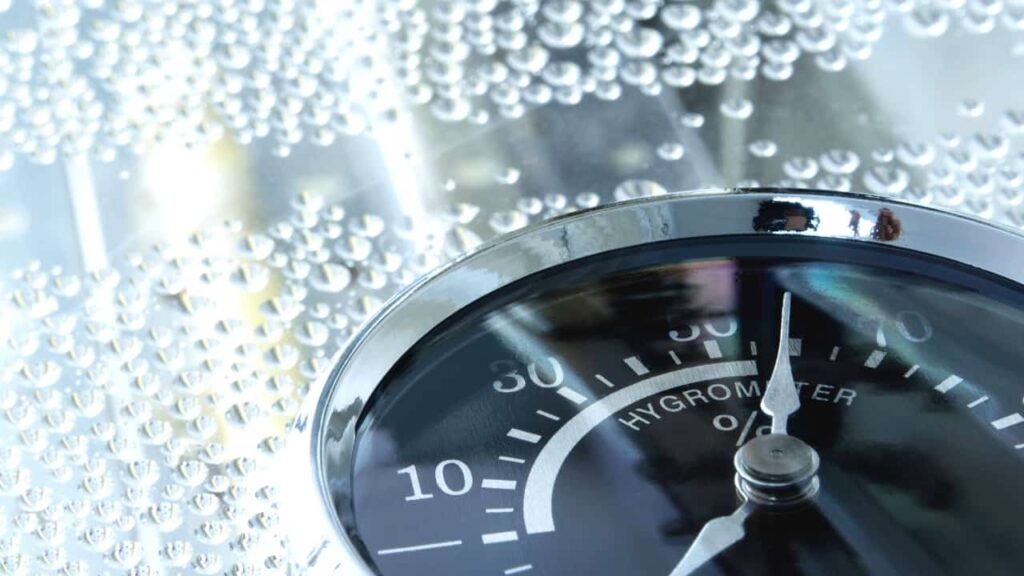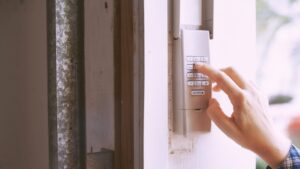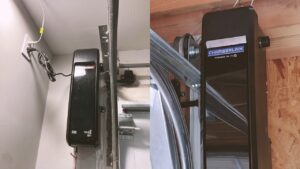Connect With A Garage Expert
Connect with local experts, Compare quotes, Get the best price.
Humidity in garage can be a real headache. If you’re not careful, humidity levels can escalate to a point where it’ll ruin your garage, and you’ll have to hire professional help. And let’s be honest; fixing the mold and the rotten garage can be too expensive for most people.
But if you stay vigilant and fix the issue before it gets out of hand, you don’t need to spend much. We’ve got some practical tips on dehumidifying your garage through proper ventilation. And if you’re looking for creative DIY solutions to make your garage look good, we’ve got that too!
So, let’s dive in and get your garage back in tip-top shape.
What Should the Level of Humidity Be in a Garage
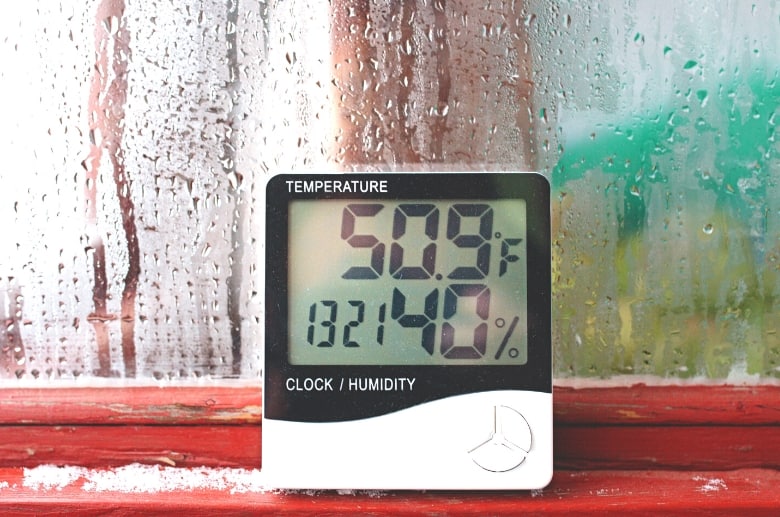
The ideal humidity for your garage is around 30%-50%, while the temperature must range between 12-15 degrees Celsius. Since warmer air can hold more water molecules, higher temperatures lead to more moisture buildup.
Maintaining humidity and temperature within an optimum range is important to prevent the deterioration of the stored items. Even though vehicles and garage tools have a chrome coating for protection, they are still vulnerable to damage caused by excessive humidity.
How to Measure Humidity in the Garage
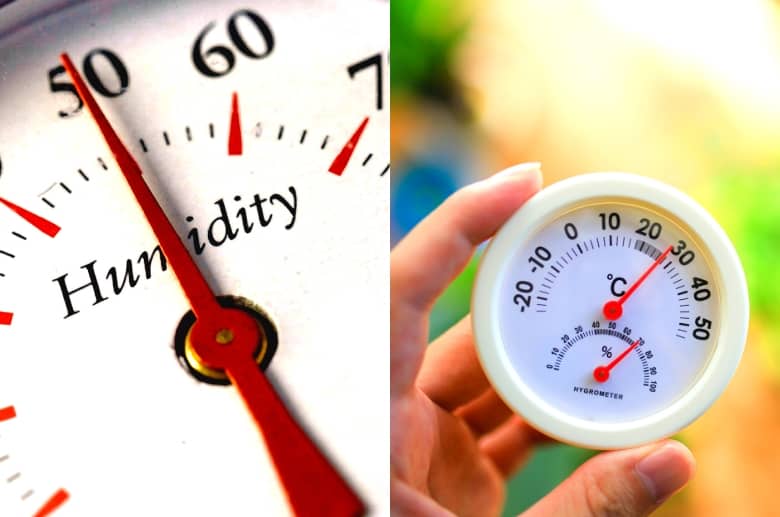
To measure the humidity of your garage, your best bet is to rely on a hygrometer (a device used to measure the air’s relative humidity (RH) or moisture content). After placing the hygrometer in the garage, you must wait 24 hours to get accurate readings.
The second option is installing humidity sensors. They measure and share the humidity of the air. These electronic devices can easily connect to your smartphone for real-time information about humidity levels.
To get the best results, you need to place humidity sensors around 5 feet above the surface to measure the average humidity of the room. It also prevents wrong readings by keeping the sensors away from wet floors.
The humidity levels near windows, doors, and other openings usually differ from the rest of the garage. Therefore, avoid placing the humidity sensors near these areas for more accurate readings.
Connect With A Garage Expert
Connect with local experts, Compare quotes, Get the best price.
What Happens if You Have High Levels of Garage Humidity
High humidity in the garage has various negative impacts, including mildew and mold development, pest infestation, higher utility bills, and corrosion/damage to your garage-stored items. Let’s take a look at them, one at a time.
Mold & Mildew – Air usually contains mold spores that reproduce in moisture. High-humidity environments contain enough moisture for mold spores to grow into visible mold colonies. The mold damages the walls and causes allergies and respiratory issues if inhaled.
Pest Infestation – High humidity levels can attract spiders, carpenter ants, earwigs, cockroaches, and termites. Increased humidity can cause the wood in your garage to absorb moisture and become damp. Since these pests are attracted to damp wood, highly humid environments become an attractive breeding ground for these pests that can damage your wooden shelves and spread germs, resulting in health issues.

Higher Utility Bills – High humidity makes it challenging to maintain a desired temperature in the garage. As a result, homeowners have to use more heating to keep the temperature moderate, leading to higher utility bills.
Corrosion/Damage – High humidity isn’t suitable for metal, paper, and wood. Metallic items corrode, while paper/wood becomes damp and weak in humid environments. Constant exposure to increased humidity levels can decrease the shelf life of your precious tools (made up of these materials), meaning you’d have to run to the hardware shop more than you’d like.
By now, we’re sure you want to run to your garage to check its humidity but hold your hygrometer just for a bit. Wait till we talk a little about the most convenient solutions a homeowner can take to reduce humidity in the garage. These solutions will go easy on your wallet too.
7 Effective Solutions to Decrease and Control Humidity in Garage
Monitoring and normalizing your garage humidity levels is essential to prevent structural damage and health issues. You can solve your garage’s humidity problem by controlling the temperature, purchasing a dehumidifier, using exhaust fans, or getting some plants. Let’s talk about these in more depth.
Control Your Garage’s Temperature
If you live in an area that’s hot most of the year, chances are your garage will have higher humidity levels than a colder area. This is because warm air has a higher capacity to hold moisture, leading to more humidity.
For this reason, it’s essential to maintain the temperature between 12 degrees Celsius and 15 degrees Celsius. But don’t fret; you can control or lower the garage temperature by considering the following:
- If you have centralized air cooling, turn on the AC in the garage. It can lower the garage’s temperature, leading to a drop in humidity levels. You can also purchase a portable air conditioner.
- Open the windows. Dry air from outside can remove water vapors/moisture from the garage. Opening windows will increase air circulation and prevent moisture buildup.
Install a Dehumidifier
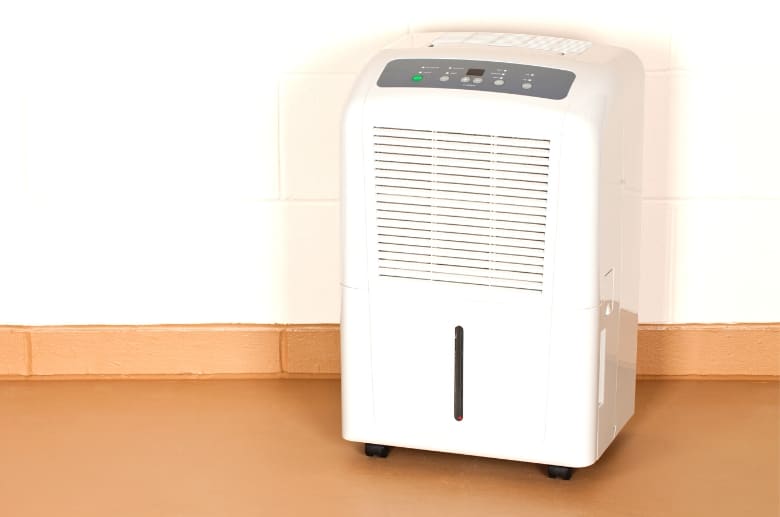
A dehumidifier is ideal for dehumidification if your garage is vast and has a power connection (they are electronic devices). It collects moisture from the air to reduce humidity levels. Most dehumidifiers have a drainage system (to remove collected moisture) that must be emptied manually. They have a fan, refrigerant, compressor, and coil beside the tank.
An average residential dehumidifier will cost you around $300. However, the price is subject to change depending on the company, model, and capacity
Here’s how to install a dehumidifier:
- Mount it at the center of the garage, near an electrical outlet.
- Clean the area before mounting the dehumidifier and ensure the garage is sealed properly.
- Once the dehumidifier is installed, attach a drainage system according to the manufacturer’s instructions.
- Plug it in and adjust the controls by consulting the buyer’s manual.
- Finally, turn it on.
Once you mount it on the wall, it draws air with the help of a fan and extracts moisture by cooling and warming the atmosphere. To see its performance, check the dehumidifier after a few hours to see how much the drainage system has filled and whether the humidity reading has dropped.
Use Exhaust Fans

Another option is to turn on the exhaust fan for ventilation. The fan will draw moist air from the garage and vent it outside, and it’ll also draw in outside dry air to lower the humidity levels. If your garage has an exhaust fan, keeping it on at a low or moderate setting is best.
However, if you don’t have an exhaust fan, use a standing or ceiling fan to ensure sufficient air circulation. This is because these fans are effective in drawing out moisture.
Add Plants
What’s better than relying on nature? Plants are natural dehumidifiers that absorb moisture to normalize humidity levels and improve air quality. You can use Spider Plant, English Ivy, Aloe Vera, Spider Plant, and Palms. However, there’s a limit to how much humidity plants can reduce. Moreover, you’ll need to add more plants depending on the size of your garage.
If you’re not properly taking care of your plants or overwatering them, plants can increase the humidity in your garage instead of reducing humidity. That is why you should always pair some plants with a dehumidifier for clean and less humid air.
Clean Your Garage
A cluttered garage can lead to air circulation issues and moisture buildup. Organize your boxes on tray shelves to ensure the ground is air circulation-free. If you have unused cardboard boxes, flatten them and put them away.
Insulation
Insulating the garage helps regulate the temperature by preventing the outside air (hot or cold) from entering your garage. Thus, minimizing the chances of high humidity levels.
To insulate your garage, seal the cracks around the doors and windows with a sealant. You can apply spray foam on the walls and floor to improve insulation. Lastly, always paint your garage in light colors, mainly white, since dark colors absorb heat more.
Connect With A Garage Expert
Connect with local experts, Compare quotes, Get the best price.
Wash Your Car Outside

Washing your car in the garage can increase the humidity, so it’s best to wash it outside. You should also let your car dry before parking it in the garage after giving it a good rinse. That’s because parking your wet vehicle in the garage can also spike humidity levels, creating a perfect mold development environment.
Final Thoughts
High humidity levels can wreak havoc in your garage. Extra moisture can cause costly damage to your cars and tools and even invite unwelcome guests, like pests and mold, which can lead to serious health problems. But don’t worry; there’s a quick and easy solution!
By investing in a dehumidifier and opening your windows to improve air circulation, you can easily regulate the humidity levels in your garage. The only exception is if you live in an area with constantly changing seasons. So, take action now and enjoy a hassle-free garage experience.
FAQs
What is the best way to ventilate a garage?
The best way is to install an exhaust fan and purchase a dehumidifier because these are foolproof ways of keeping moisture levels normal.
How do you ventilate a garage with no windows?
If your garage has no windows, you can ventilate it by turning on the air conditioning or the ceiling/standing fan. You can also open the garage door to help circulate air in the garage.
Will a fan help with humidity in a garage?
Yes, a fan can help, including the exhaust fan and ceiling/standing fans. The ceiling/standing fans help circulate air within the garage while the exhaust fan draws out the moisture and lets in dry air.

